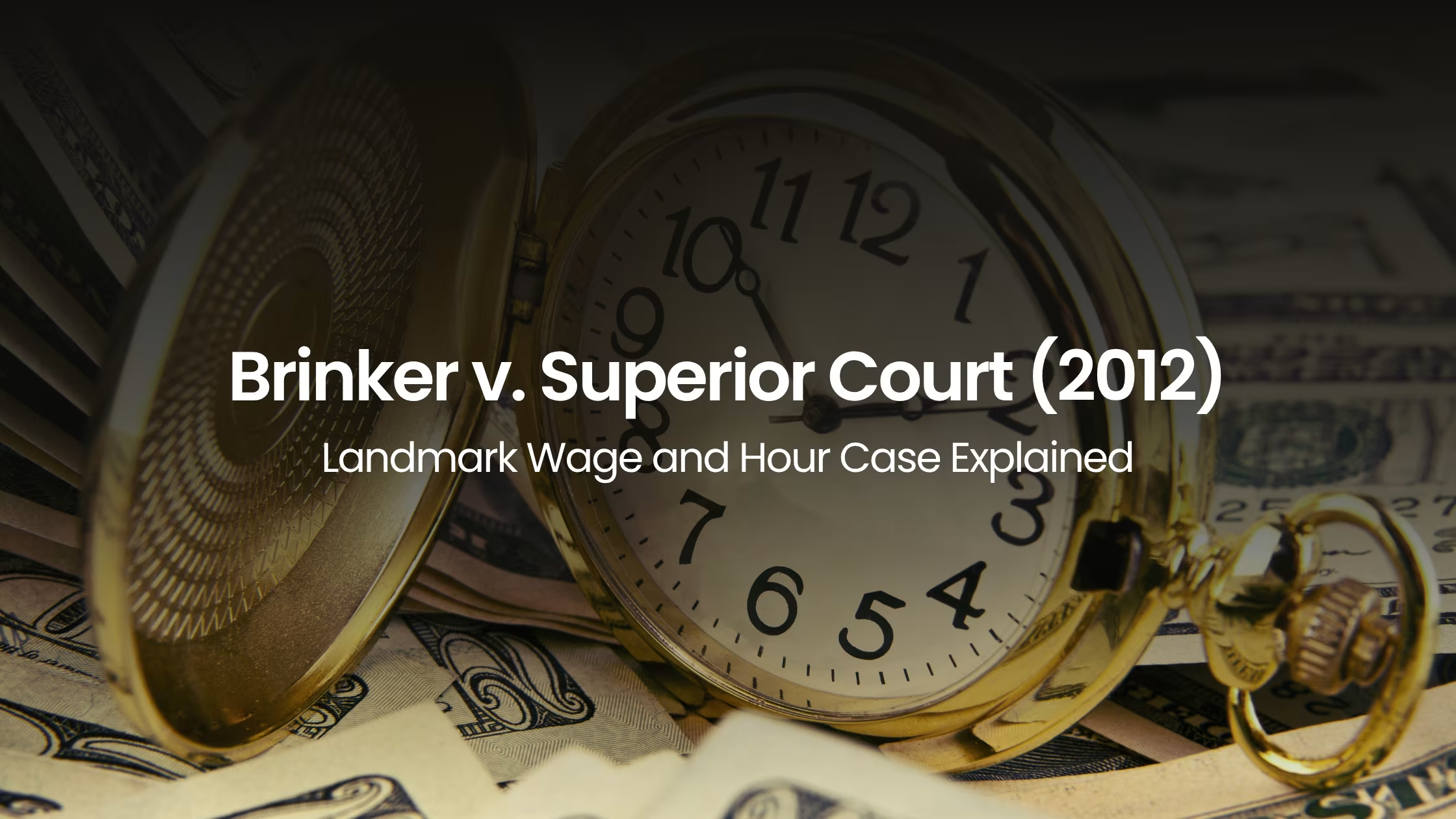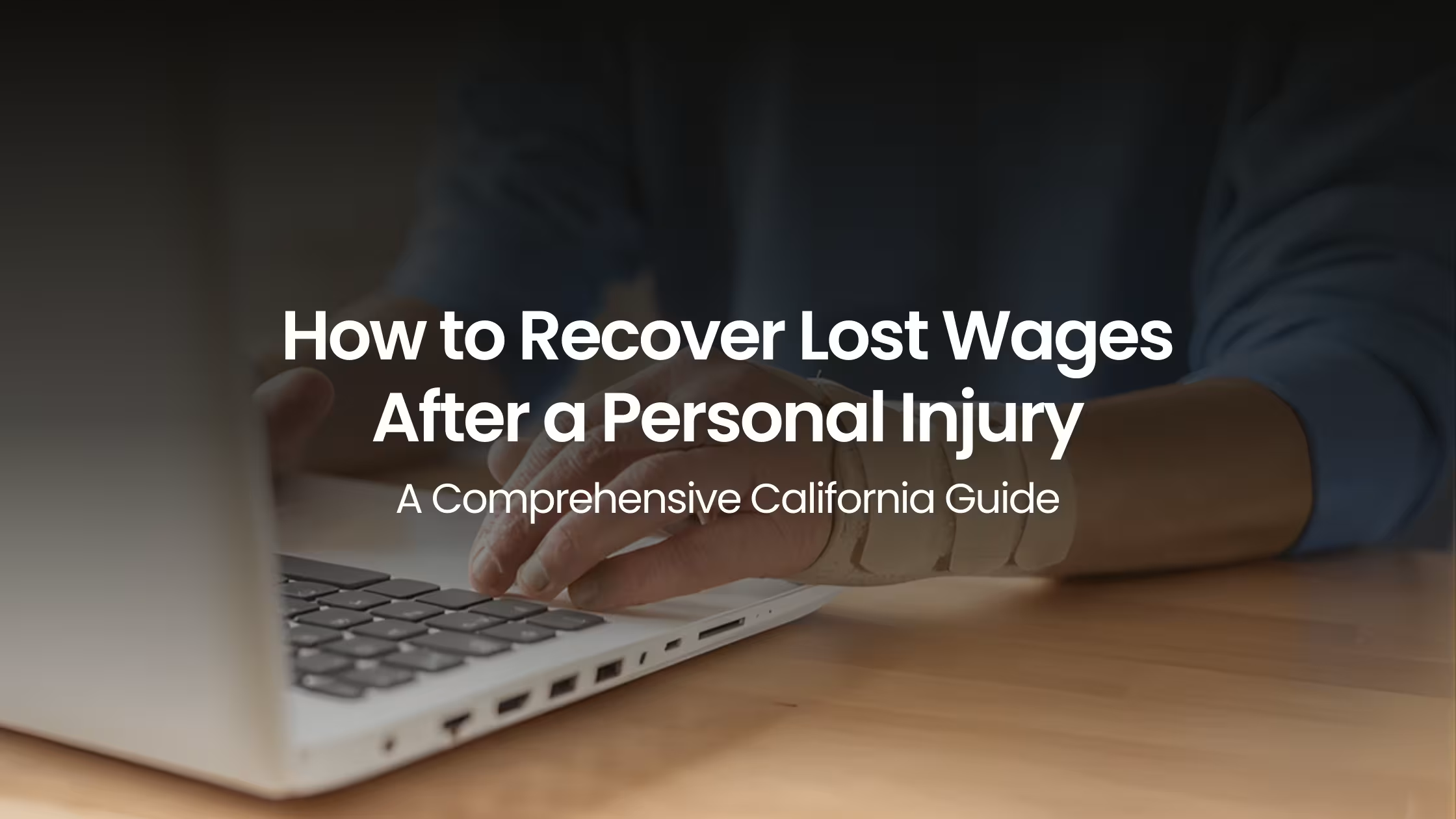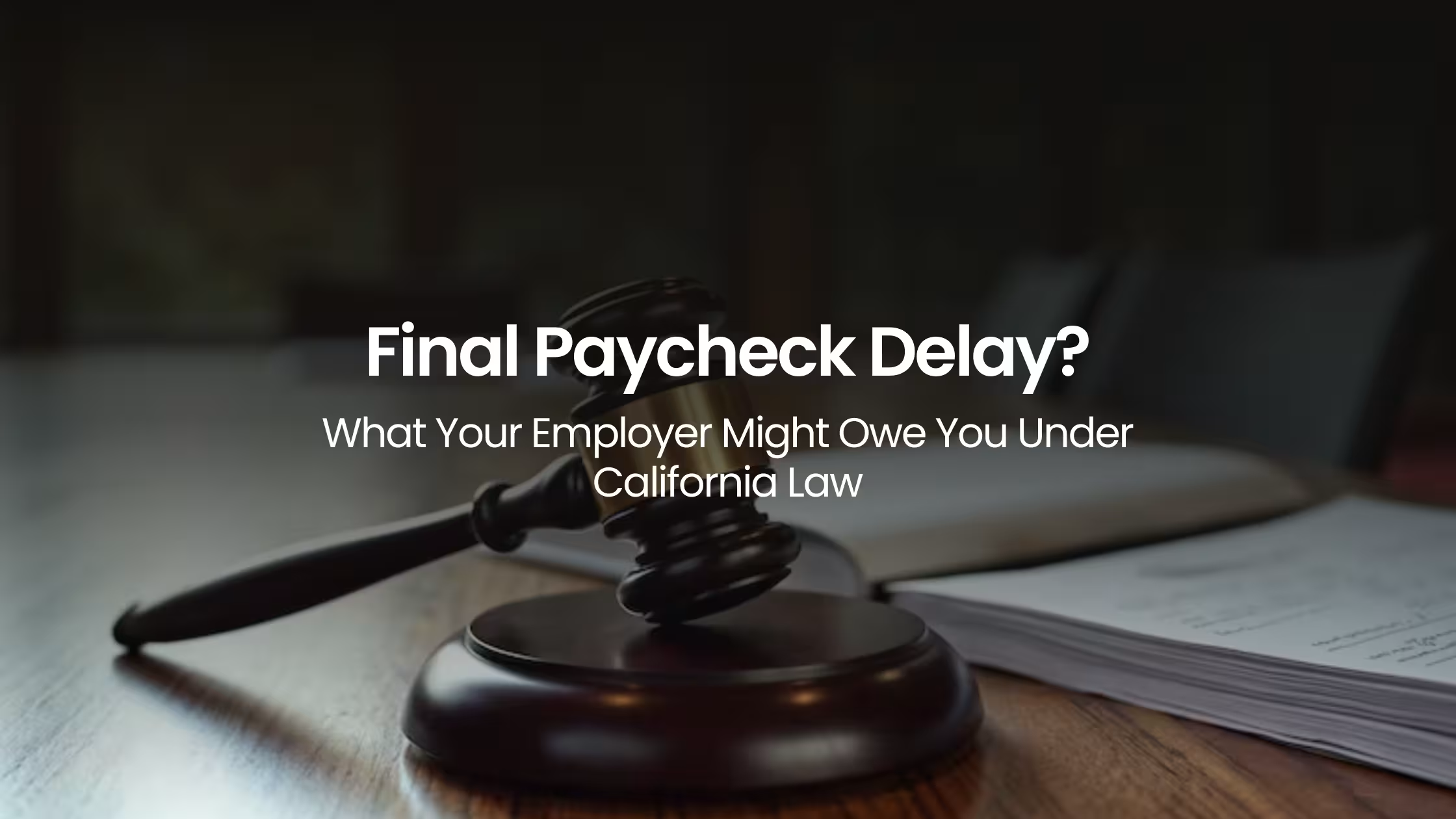Wage and hour violations are among the most common workplace disputes in the United States. From unpaid overtime to missed meal and rest breaks, employees across industries often face unfair treatment that affects both their paychecks and their well-being. California, in particular, has some of the strongest wage and hour protections in the nation, yet litigation in this area remains complex and highly contested.
One of the most significant cases to shape California’s wage and hour law is Brinker Restaurant Corp. v. Superior Court (2012). This case clarified the obligations of employers regarding meal and rest breaks, while also defining how class-action lawsuits involving wage disputes should be handled. The ruling remains a cornerstone of labor law in California and continues to influence both employee rights and employer responsibilities.
In this case study, we’ll explore:
- The background of the Brinker case
- Key legal questions presented
- The California Supreme Court’s ruling
- How the decision reshaped wage and hour law
- Lessons employees and employers can draw from the case
Background of the Case
Brinker International, the parent company of popular restaurants like Chili’s, faced a class-action lawsuit brought by employees who alleged widespread wage and hour violations.
The employees claimed that Brinker:
- Failed to provide legally required meal and rest breaks
- Required employees to work “off the clock”
- Did not properly compensate them for overtime
The lawsuit was significant because it involved tens of thousands of employees across California, making it one of the largest class actions of its kind. The workers argued that Brinker had a uniform practice of denying employees their legally mandated breaks, which they said violated California labor laws.
The case worked its way through the courts until it reached the California Supreme Court, which was tasked with addressing several fundamental questions about wage and hour protections.
Key Legal Questions in Brinker v. Superior Court
The California Supreme Court was asked to address three critical issues:
- What exactly are an employer’s obligations regarding meal breaks?
- Must employers ensure that employees take their breaks, or is it enough to simply provide them?
- How should rest breaks be scheduled?
- Do California labor laws dictate the timing and distribution of rest periods?
- When is a class-action lawsuit appropriate in wage and hour cases?
- Under what circumstances can employees join together to pursue these claims as a group?
These questions were crucial not only for Brinker’s employees but also for workers and employers across California.
The California Supreme Court’s Decision
In 2012, the California Supreme Court issued its landmark decision in Brinker v. Superior Court.
Here’s how the court ruled on the major issues:
1. Meal Break Obligations
The court held that employers are required to provide meal breaks, but they are not obligated to ensure that employees take them.
This meant:
- Employers must relieve employees of all duty for at least 30 minutes.
- Employees are free to use that time as they wish.
- However, if an employee voluntarily chooses to work through a break, the employer is not automatically liable as long as the break was properly offered.
This ruling clarified a long-debated question and struck a balance between employee rights and employer responsibilities.
2. Rest Break Timing
The court clarified that California law entitles employees to 10 minutes of rest for every four hours worked, or major fraction thereof. Importantly, the court ruled that rest breaks should generally be scheduled in the middle of a work period, “insofar as practicable.”
This ruling reinforced that rest breaks are not optional and must be meaningfully provided during the workday.
3. Class Action Viability
The court also addressed the issue of class certification. It determined that wage and hour claims can be brought as class actions if there is evidence of a company-wide policy or practice that violates the law.
This was a major victory for employees, as it allowed workers with similar claims to band together rather than face the burden of individual lawsuits.
Impact of the Brinker Decision
The Brinker case remains one of the most influential wage and hour cases in California history. Its impact can be seen in several areas:
- Clarified Employer Duties: Employers must make meal and rest breaks available but are not required to police employees to ensure they take them.
- Strengthened Rest Break Rules: The ruling underscored the importance of properly timed rest periods.
- Opened the Door for Class Actions: Workers gained the ability to challenge widespread labor violations through collective action.
For employees, the ruling reaffirmed their rights to rest and meal breaks while clarifying what remedies are available if employers fail to comply. For employers, the decision provided guidance on how to structure workplace policies to avoid litigation.
Broader Lessons from Brinker v. Superior Court
For Employees
- Know Your Rights: California law entitles you to both meal and rest breaks. If you are not being given these opportunities, you may have a valid legal claim.
- Document Violations: Keep records of missed breaks or unpaid overtime. This evidence is crucial if a dispute arises.
- Class Actions Are Powerful: If multiple workers are experiencing the same violations, pursuing a class action may be the most effective path to justice.
For Employers
- Clear Policies Matter: Employers must establish and communicate clear policies that comply with wage and hour laws.
- Training Supervisors: Managers should be trained to respect employee break rights and avoid practices that could create liability.
- Avoid Uniform Violations: Company-wide policies that deny breaks or encourage off-the-clock work can expose employers to large-scale class actions.
Why This Case Still Matters Today
More than a decade after the decision, Brinker v. Superior Court continues to influence wage and hour litigation. California courts regularly cite it in wage and hour cases, and it remains a guiding precedent for both employee advocates and defense attorneys.
In an era where gig economy workers, remote employees, and part-time staff are increasingly common, questions about breaks, overtime, and wage protections remain pressing. The Brinker case serves as a reminder that wage and hour laws are fundamental to ensuring fairness in the workplace.
Ladva Law’s Perspective
At Ladva Law, we’ve seen firsthand how wage and hour violations impact workers across California. Employees are entitled to dignity, fair compensation, and proper breaks during their workday. Unfortunately, violations often go unchallenged because workers fear retaliation or are unsure of their rights.
The Brinker decision empowers employees to take action and provides a roadmap for holding employers accountable. Our firm remains committed to standing up for workers who have been denied their lawful rights.
Conclusion
The Brinker v. Superior Court (2012) decision reshaped the landscape of wage and hour law in California. By clarifying employer obligations, strengthening rest break protections, and affirming the role of class actions, it continues to serve as a cornerstone case in labor law.
For employees, it is a reminder to remain vigilant and assertive about their rights. For employers, it underscores the importance of compliance and fair workplace practices.
At Ladva Law, we believe every worker deserves to be treated fairly. If you’ve experienced wage and hour violations, our experienced attorneys are here to help you seek justice. Talk to our experts today.






